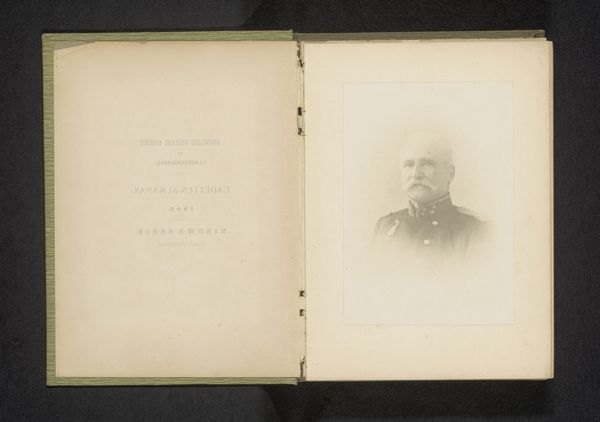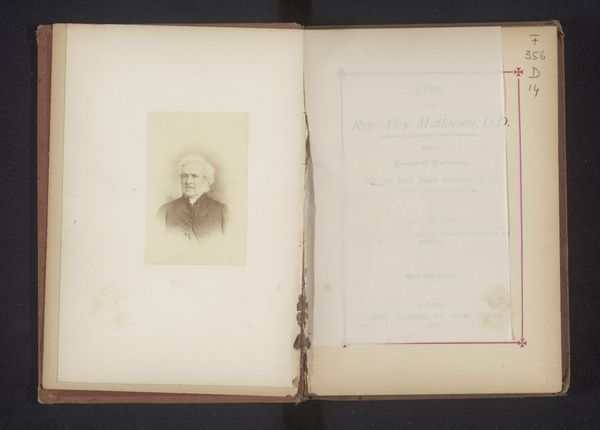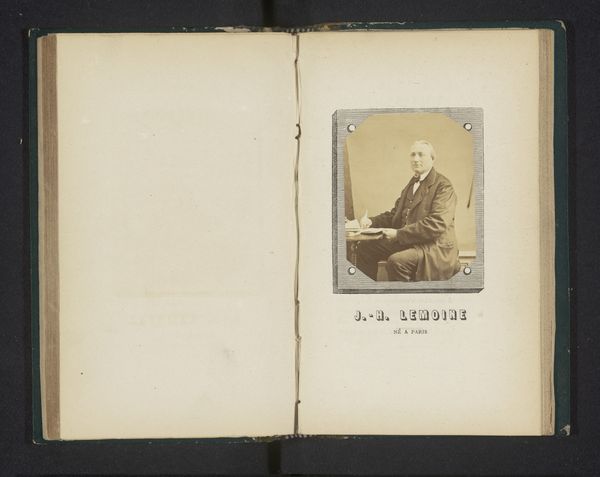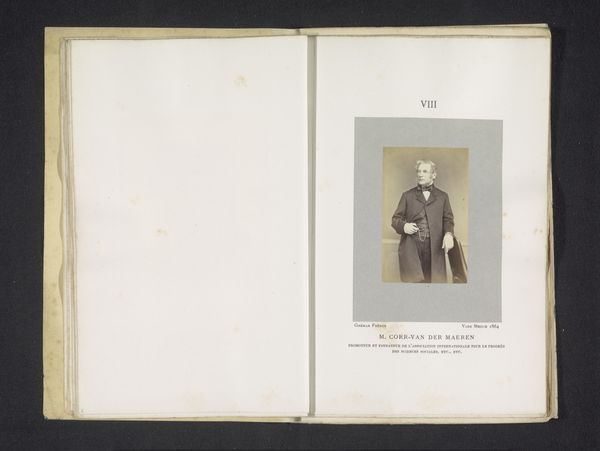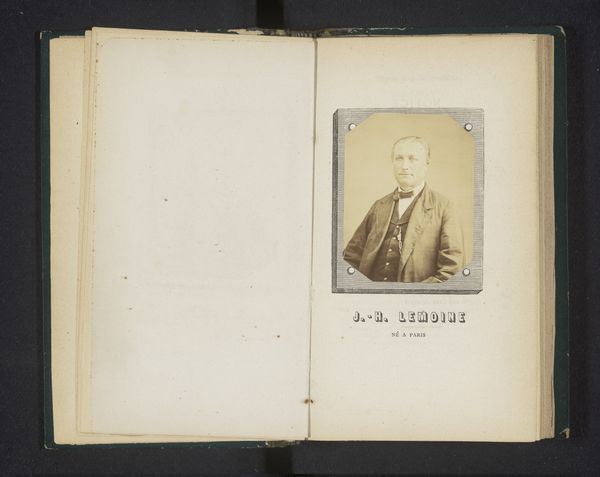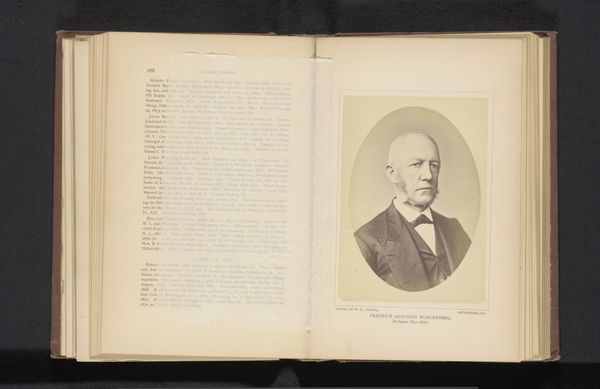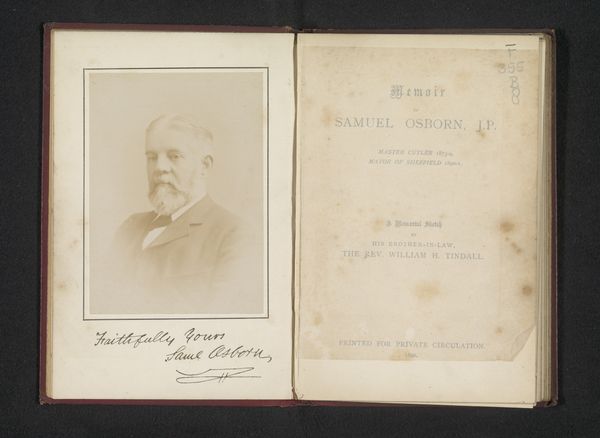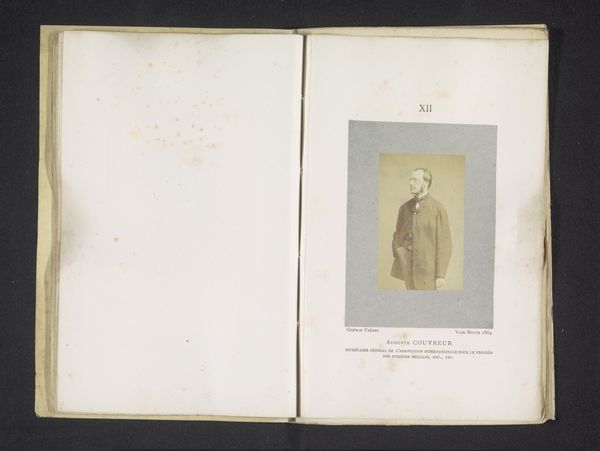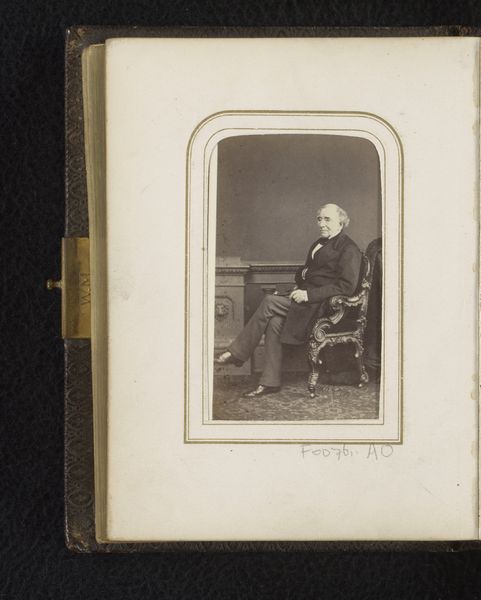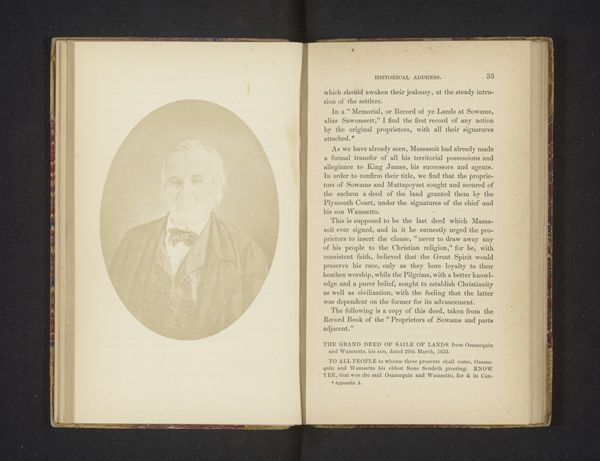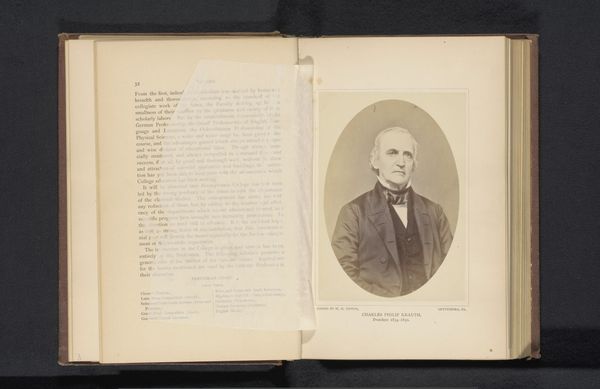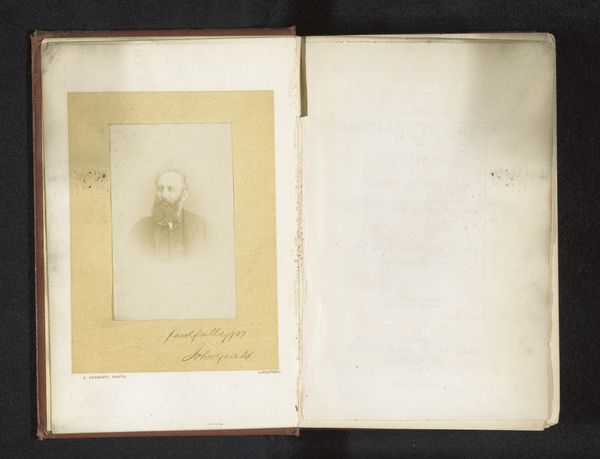
photography
#
portrait
#
photography
Dimensions: height 145 mm, width 105 mm
Copyright: Rijks Museum: Open Domain
Curator: Looking at this album photograph, a “Portret van John Bamford,” created sometime before 1873, what immediately strikes you? Editor: A somber formality, wouldn’t you say? He's presented as quite the pillar of society—severe but stable. The oval framing of his figure lends it an aura, almost halo-like, contained yet important. Curator: Precisely! Oval portraits harken back to older traditions elevating the sitter, lending them permanence beyond their immediate lifetime. His placement suggests someone well-regarded by their community. I can almost read “The Apostle Among The Poor Memorials, Mr John Banford…” and then “the Rev John M, Ransford”. Religious men, one assuming a follower or a supporter of the other? Editor: It does hint at a significant religious and social context, I imagine. It prompts questions about photography’s function then, wouldn't you agree? It solidifies social standing—rather like paintings did. Commissioned by whom and for what precise function—to what readership was the second page of text intended for? The picture itself is subdued and speaks to broader anxieties regarding visibility and influence. Curator: An excellent point regarding visibility, wouldn't you agree? Bamford is literally being enshrined here through this double opening of the book: a monument of sorts constructed both pictorially and through the written word, an attempt at capturing not just his physical appearance but the essence of his impact. We get so used to instantly viewing faces that we've potentially lost this symbolic reading! Editor: He is positioned in the history book, a memorial indeed, and it definitely says more about the intended readership and memorializing social class than it might initially imply. It presents such a specific image that feels far from neutral! Curator: I agree, and the subtle shift towards mass reproducibility granted through photographic techniques like these had lasting effects not only for private individuals seeking mementos, but, more broadly for society in defining status markers through popular, distributed imagery. The photograph offers an uncanny window into these complex societal forces at play! Editor: True enough. Thinking about what a photograph is designed to accomplish really makes you view historical materials and cultural conventions surrounding them a lot differently. Curator: It certainly does. These kinds of portrait photographs help us examine more than just one man: it asks how and what a specific era considered worthy of remembering!
Comments
No comments
Be the first to comment and join the conversation on the ultimate creative platform.
